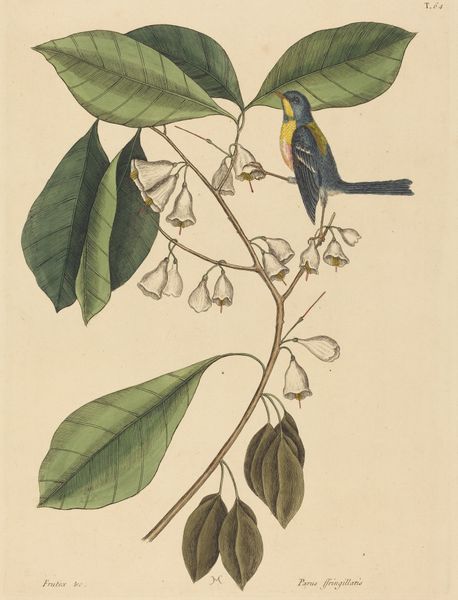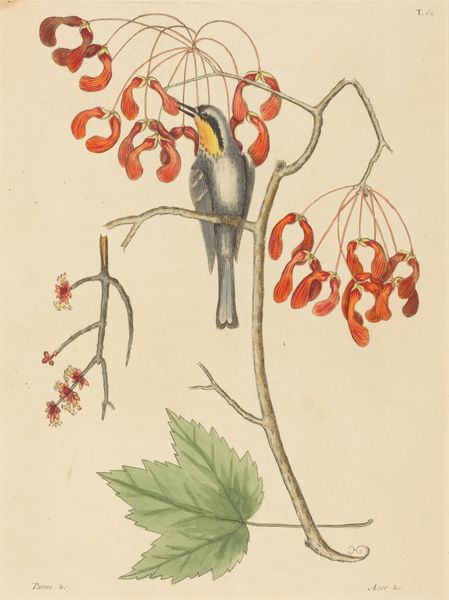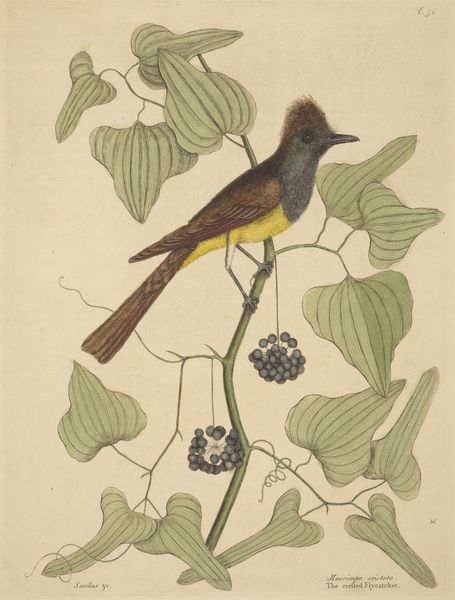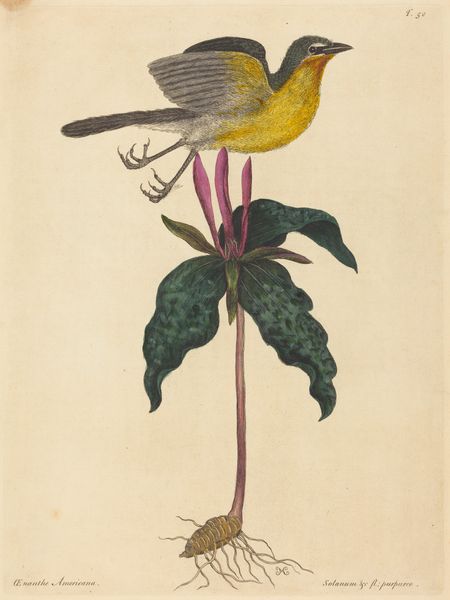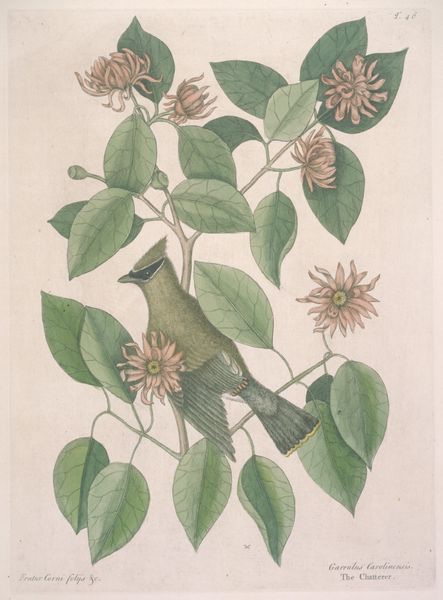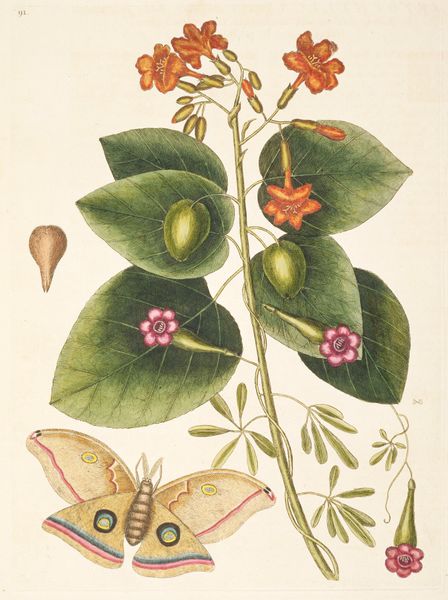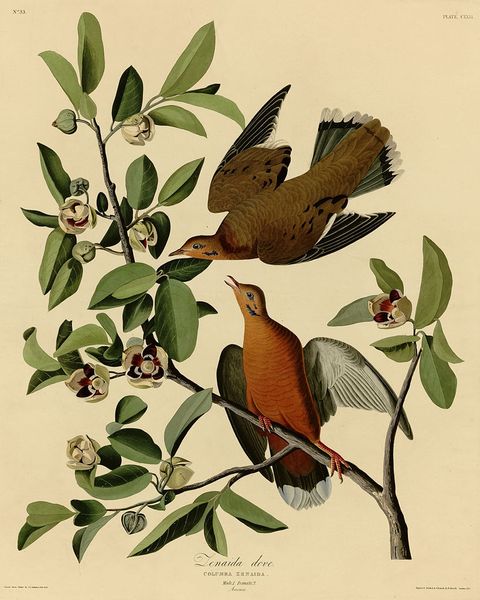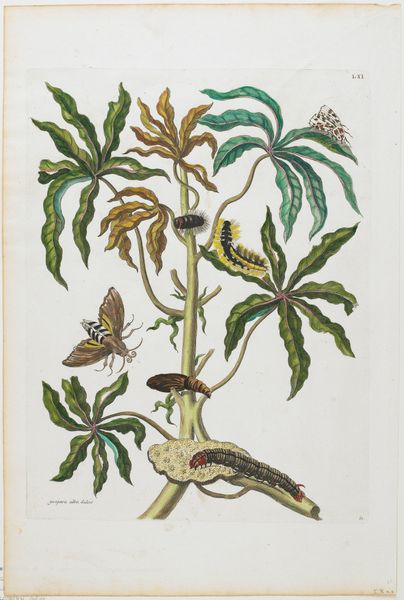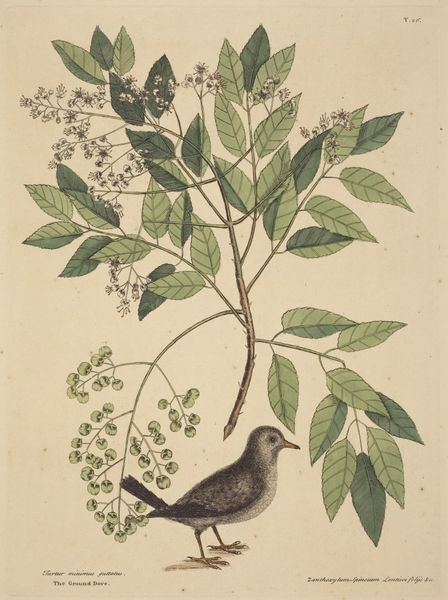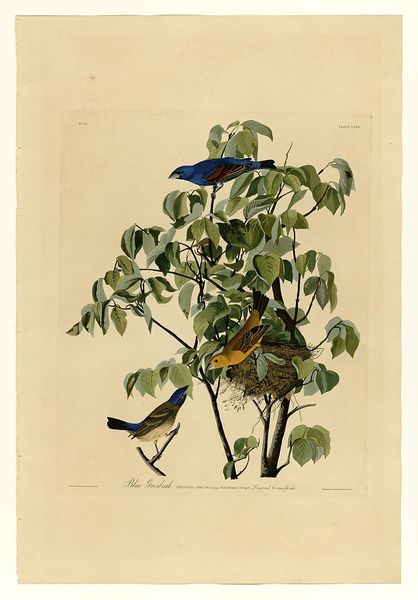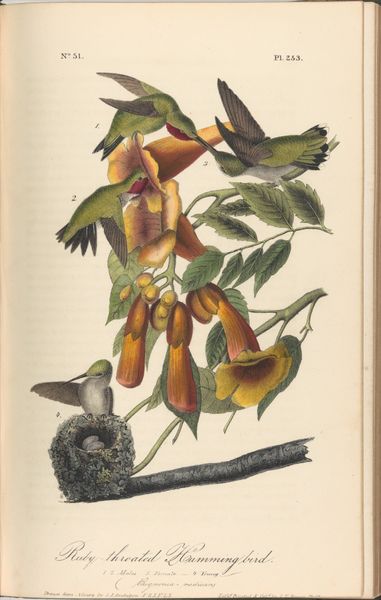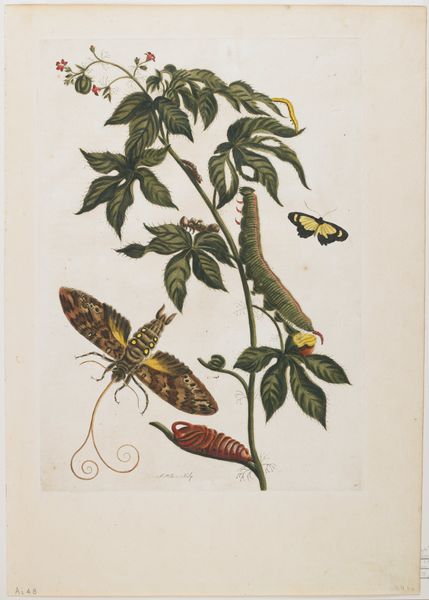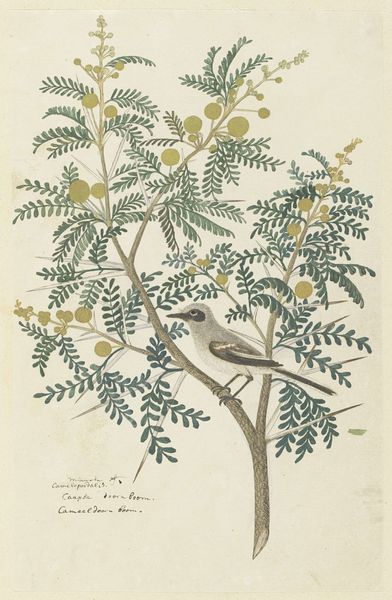
drawing, mixed-media, print, watercolor, pencil
#
drawing
#
mixed-media
# print
#
landscape
#
botanical illustration
#
watercolor
#
pencil
#
watercolour illustration
#
naturalism
#
botanical art
#
watercolor
Dimensions: plate: 35.2 x 26.4 cm (13 7/8 x 10 3/8 in.) sheet: 40.2 x 28.4 cm (15 13/16 x 11 3/16 in.)
Copyright: National Gallery of Art: CC0 1.0
Curator: This artwork, titled "The Yellow Titmouse," possibly dating back to 1754, is attributed to Mark Catesby. It's a mixed-media piece that combines drawing, watercolor, and printmaking. The overall impression I get is serenity—the subtle colour scheme has a calming effect. Editor: Well, my immediate reaction is to the detailed rendering, its lines, the layered watercolor, its technical facility—it’s a really striking example of botanical illustration. Curator: Catesby's work emerged during a time of intense colonial expansion, fuelled by scientific exploration. He documented the natural history of the Americas. How do you see this fits into that historical and societal narrative? Editor: The precision here speaks volumes about early scientific inquiry and documentation, with its inherent interest in classifying the natural world. The artist focuses almost obsessively on texture and form. I'm thinking about naturalism in art at that period. Curator: Precisely! It underscores the colonial gaze—the impulse to catalogue and contain nature for European understanding and exploitation. How do you interpret Catesby's choice to feature a seemingly ordinary yellow bird within this colonial context? Does this suggest something about value systems during the 18th century? Editor: Let's get back to form here. Think about the leaves with its distinct shape—its edge against negative space; and of course the smooth gradations in color on the body of the Titmouse that suggests almost a third dimension. This gives the picture clarity. I find the composition particularly compelling. Curator: I agree. And note, however, the social and political implications of how even the natural world was subjected to classification according to a rigid and hierarchical structure. It embodies this colonial mindset where every facet of the landscape could be analyzed and exploited. I also notice how Catesby includes plants that bear fruits which could be for nutrition or trade. Editor: Well, my gaze keeps being drawn to the details. Now you have given your view of things. I may explore other meanings as well. Curator: Indeed. The intersections between artistic representation, scientific discovery, and colonial power remain central to any real discussion. Editor: Absolutely, but now let me linger a little bit longer with its beauty.
Comments
No comments
Be the first to comment and join the conversation on the ultimate creative platform.
